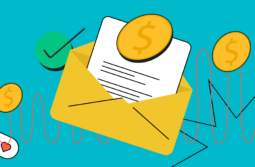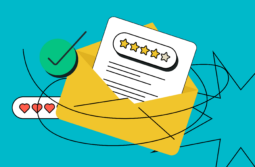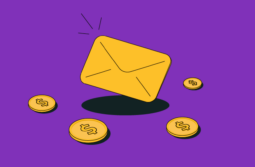Let’s face the truth: however elaborate your email design may be, a weak copy and dull content will make your subscribers get bored and leave. Here is where copywriting skills help. Copywriting is the art of writing texts, where your talent matters of course, but not so much as the years of practice. To know about copywriting mistakes, read the SendPulse blog.
To master the art, you’d better be ready for not so much a creative process as a set of rules, tactics, and formulas. Creativity will be a nice bonus to your knowledge.
So, what are these tactics of email copywriting? Want some useful tips? We are glad to share them.
Keep an eye on spelling and punctuation
Absence of spelling and punctuation mistakes in your text positively influences both the reader’s goodwill and trust. And vise versa. Consider the numbers: 59% of users will not deal with a brand that makes common spelling mistakes. Offer quality? Provide it in your emails first.
Mind the word order
English is rigid. Never try to deceive it and all people around by violating its strict word order. Your words will lose sense, and you will lose subscribers, which is always worse. So, your message must be clear. Always.
Keep it simple
Write as if you are talking to a friend. The copy must be open and simple. Don’t overuse mind-bending or incomprehensible words, intricate metaphors or expressions. Not sure if your reader understands you? Remove, change, or even explain difficult terms.
Put yourself in your reader’s shoes
Stop describing the endless achievements of your company. It is no doubt great and successful. But what is the reader of your email feeling? Ask yourself: what would help you to make a decision if you were a client? And based on this, write about the advantages and value of your product.
See how the company Munchkin specifies the advantages of its mounted gates for protecting children:

Cut the excess
Too many letters and paragraphs are a real burden for the reader. The point of the message slips away as it is buried under tons of text. Paragraph is too large? — Split it. Sentence is too long? — Cut it down. Each thought needs to be as short as possible while still carrying meaning. Take time to make your message concise.
Make the copy readable
Organize your email copy well: use white-space characters, bullet points, headings, subtitles, and change the font size if necessary. The order is the main priority.
Consider the two emails below.
The first is a newsletter from Goop. Images are okay, but what’s with the text? Lots of words, no distinct structure — doesn’t look appealing, yeah? The light gray color of the text on the white background complicates readability even more. Why should a reader give this text a chance if it looks so boring and tiring?

The second example is an email from theSkimm. A lot of text again, but it’s easy to scan due to rubrics, division into paragraphs, headlines and blank spaces. All these simple tricks make the information readable.

Follow the “one CTA per email” principle
When you add extra CTAs into your email, the reader is more likely to be lost, hesitate about the decision, and then delete the email.
If you still need to include a secondary CTA, use a postscript — P.S. Subscribers usually cannot resist P.S. content and always read it. The first CTA is the primary action; the CTA in the P.S. is the secondary action, but it complements the first one.
Have a look at the email from KissMetrics: here the secondary CTA after the P.S.encourages the reader to share this email with a colleague.
Read about how to improve CTA in SendPulse blog.

And for dessert: Meet the PAS formula
To better construct your email, keep in mind the classic PAS formula. Use it as a specific structural frame for your text. The formula contains three elements:
Problem
Identify the problem of your target audience. Remember what email users complain about and what struggles they have. Use their pain points to write about in your email.
Agitation
Next, make your subscribers anxious. Tell them how the problem influences the important aspects of their life and business.
Solution
Now that the users know about their problem and its negative effects, offer a solution. Tell them about your product and how it can help.
For a better understanding of this concept, look at the example of using the PAS formula in a real-case scenario below.

In this message, the sender first states the problem the subscriber might experience, then dwells on its threat to their business, and as a relief, offers help. That’s all — the fish is on the hook.
Follow the tips above, create a strong copy, and send campaigns in SendPulse!






